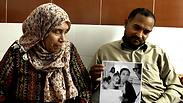
A 1975 photo shows Palestinian refugee Fathiyeh Sattari, her eyes wide with worry, as she presents her malnourished baby boy to a doctor at a clinic run by a UN aid agency.
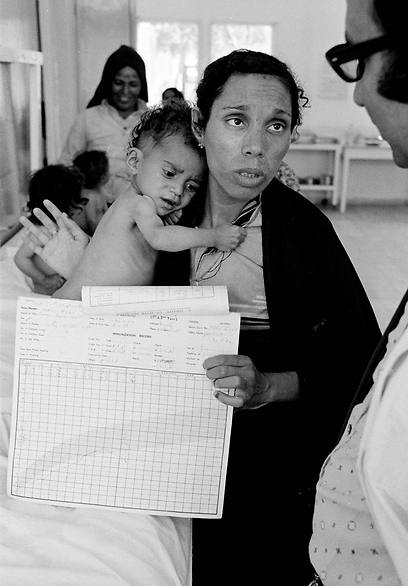
The photo is one of 525,000 in the agency's archive being digitized to preserve a record of one of the world's most entrenched refugee problems, created in what the Palestinians call the "Nakba," or "catastrophe" in Arabic — their uprooting in the 1948 Independence War over Israel's creation.
The mother and son of the 1975 photo are part of a family that is now in its fourth generation as refugees. Sattari's parents fled their home in what is now Israel in 1948. Fathiyeh was born in the Gaza Strip and raised her own family in the Rafah refugee camp. Her son Hassan — the baby with the gaunt face in the photo — is now a 40-year-old father of five, living in another camp.
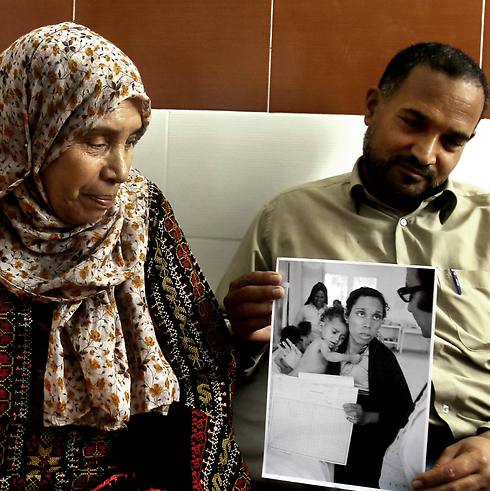
They appear resigned to never being able to return to their ancestral home. Hassan said he doesn't believe Israel would ever agree to take back large numbers of refugees who, along with their descendants, now number more than 5 million across the Middle East.
"Without confrontation, we can't go back," he told The Associated Press. Instead, he's banking on education for his children to help them escape. He said he was taking time off from work as a government auditor this week to help his 9-year-old son Abdel-Hai prepare for final exams.
He said he's too busy to mark the Nakba, commemorated each year in the West Bank and Gaza Strip on May 15, a day after Israel was founded in 1948.
This year's commemorations come after a new blow to prospects for an Israeli-Palestinian peace deal that could include a political solution for the Palestinian refugees. US-brokered negotiations fell apart in April, the latest in more than two decades of failed attempts to set up a Palestinian state next to Israel.
The fate of the refugees is one of the most contentious issues on the table.
Israel opposes a mass return, fearing it would dilute the state's Jewish majority. In the Palestinian public discourse, a large-scale return is still portrayed as the main goal. The Palestinian leadership has said each refugee has the right to choose his or her fate, including return or resettlement in a future Palestinian state or third countries, but also hinted at flexibility in the context of a final deal.
According to UN figures, more than 700,000 Palestinians fled or were driven out in the 1948 War of Independence, many settling in the neighboring West Bank, Gaza, Jordan, Lebanon and Syria. Israel defeated the armies of five surrounding Arab states that had attacked one day after the Jewish state was declared in 1948.
Tens of thousands more were displaced in the 1967 Six Days War in which Israel captured the West Bank, Gaza and East Jerusalem, lands the Palestinians seek for a state.
Today, some 1.5 million refugees remain in the region's 58 camps, where the UN Relief and Works Agency has provided education, medical care and food since it was created in 1950 to help uprooted Palestinians. In countries where host governments were more welcoming, such as Syria and Jordan, fewer refugees remained in camps than, for example, in Lebanon.
From the start, the UN agency documented the exodus, accumulating more than 430,000 negatives, 10,000 prints, 85,000 slides, 75 films and 730 video cassettes. In 2009, the UN cultural agency UNESCO inscribed the archive in its Memory of the World list, recognizing its historic value.
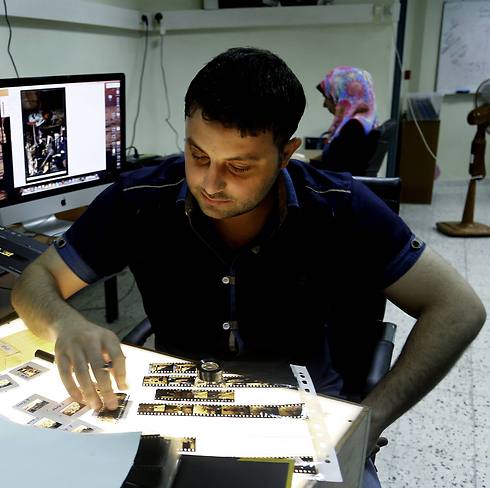
Last year, the $1 million digitization began with funding from Denmark, France and the Palestinian private sector. Most of the work is being done at the Danish Royal Library, while more than 50,000 photos are processed in Gaza.
An online database already has close to 2,000 images. In addition, 50 prints were displayed in an exhibit, "The Long Journey," which opened in Jerusalem in November, then traveled to Amman, and is to reach Gaza, the West Bank and the Lebanese capital of Beirut.
The photo of Hassan and Fathiyeh Sattari will be part of the Gaza exhibit, said Lionello Boscardi of the UN aid agency. He said the photos show the resilience of the refugees and also the UN agency's efforts to provide basic services.
Fathiyeh Sattari said UN aid was crucial for her family.
She was born in Gaza, three years after her parents fled their village of Sattariyeh in what is now central Israel. She married a cousin, Hamdan, and raised 11 children in a room in the Rafah refugee camp.
The 1975 photo shows her with her second-oldest, Hassan, at a UN clinic. She said Hassan was emaciated because of an infection and because she had trouble breastfeeding.
For years, her husband and others in the camp worked in Israel as day laborers. A brother-in-law, Ibrahim, worked in Israel's Rishon LeZion, near the ancestral village, of which only a few houses remain. The children studied in UN schools, and one of Fathiyeh's five sons works as a physician in Italy.
After the outbreak of a Palestinian uprising in 2000, Israel kept out Gaza workers, and the Sattaris became more dependent on UN aid, including packages of rice, sugar and cooking oil.
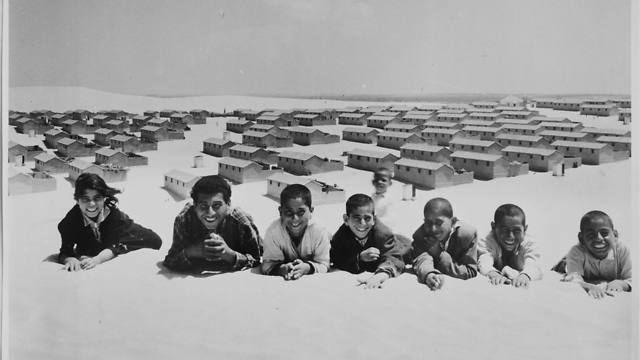
Today more than 800,000 refugees in Gaza receive food aid, UN officials said. Refugees make up the majority of the population of 1.7 million in the tiny Mediterranean coastal strip, where poverty has deepened since Israel and Egypt blockaded the territory following a takeover by the Islamic militant Hamas in 2007.
Hassan Sattari is ambivalent about the aid. He received a good education, but believes the support inadvertently prolonged Palestinian exile. "Without UNRWA, there would have been greater pressure for a solution," he said.
Chris Gunness, a spokesman for the UN agency, dismissed that idea.
"What perpetuates the refugee problem is the failure of the political parties to solve it," he said.















